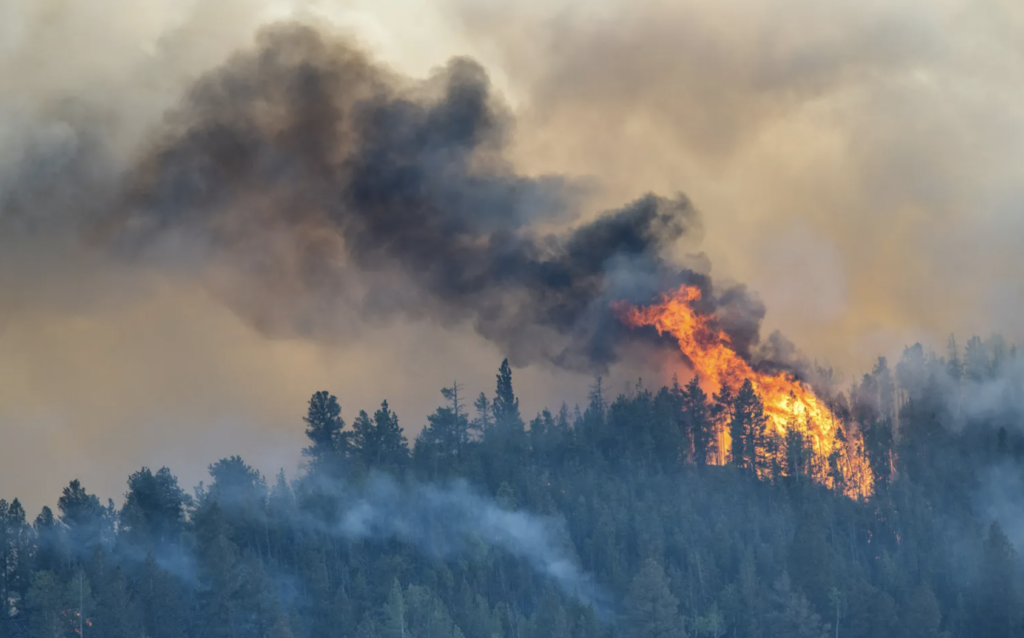
Colorado’s picturesque landscapes are one of its most cherished qualities, but they also come with the inherent risk of wildfires. With the increasing frequency and intensity of wildfires across the state, homeowners must take proactive steps to protect their properties. Here’s how you can ensure your home is safeguarded from the threat of wildfires.
Understanding Wildfire Risks
Colorado’s dry climate, coupled with windy conditions and dense vegetation, creates a perfect storm for wildfires. Even if your home isn’t located directly in a forested area, embers from distant fires can still pose a significant threat. Understanding the risks is the first step in developing an effective wildfire prevention strategy.
Creating Defensible Space
A key element in wildfire prevention is creating defensible space around your home. This involves clearing flammable vegetation and debris within a 30-foot radius of your home. By doing so, you reduce the amount of fuel available to a wildfire, making it harder for flames to reach your property.
Key Tips for Defensible Space:
- Remove Dead Vegetation: Regularly clear away dead leaves, branches, and plants from your yard, roof, and gutters.
- Trim Trees and Shrubs: Ensure that trees are trimmed so that branches are at least 10 feet away from your home and each other. This helps prevent a fire from jumping from tree to tree.
- Use Fire-Resistant Landscaping: Consider using fire-resistant plants and materials like gravel or stone in your landscaping. These can act as barriers to slow the spread of a fire.
Roof and Gutter Maintenance
The roof and gutters are often the most vulnerable parts of your home during a wildfire. Embers can easily ignite dry debris, leading to a devastating fire.
Roof Safety Tips:
- Choose Fire-Resistant Roofing Materials: If you’re replacing your roof, opt for fire-resistant materials such as metal, clay, or asphalt shingles.
- Clean Gutters Regularly: Ensure that gutters are free of leaves, pine needles, and other debris that could catch fire.
- Install Ember-Resistant Vents: Consider installing ember-resistant vents to prevent embers from entering your attic or crawl spaces.
Home Hardening Techniques
Beyond the roof and gutters, other areas of your home can also be fortified to resist wildfires.
Additional Measures Include:
- Seal Gaps and Openings: Seal any gaps in your home’s exterior, including those around windows, doors, and eaves, to prevent embers from entering.
- Use Fire-Resistant Siding: If possible, upgrade to non-combustible siding materials like stucco, brick, or fiber cement.
- Install Dual-Pane Windows: Dual-pane windows are less likely to break during a wildfire, which can prevent flames and embers from entering your home.
Community Efforts and Regulations
Wildfire prevention isn’t just an individual effort—it’s a community one. Many Colorado communities have regulations in place that require homeowners to maintain defensible space and take other fire prevention measures. Additionally, consider participating in community wildfire protection plans (CWPPs) or joining a local Firewise USA® program to stay informed and engaged in collective efforts to reduce wildfire risks.
Conclusion
As a homeowner in Colorado, protecting your home from wildfires is a crucial responsibility. By creating defensible space, maintaining your roof and gutters, and hardening your home’s structure, you can significantly reduce the risk of wildfire damage. Remember, wildfire prevention is an ongoing process that requires regular maintenance and community involvement. Taking these steps not only protects your property but also contributes to the safety of your entire community.
